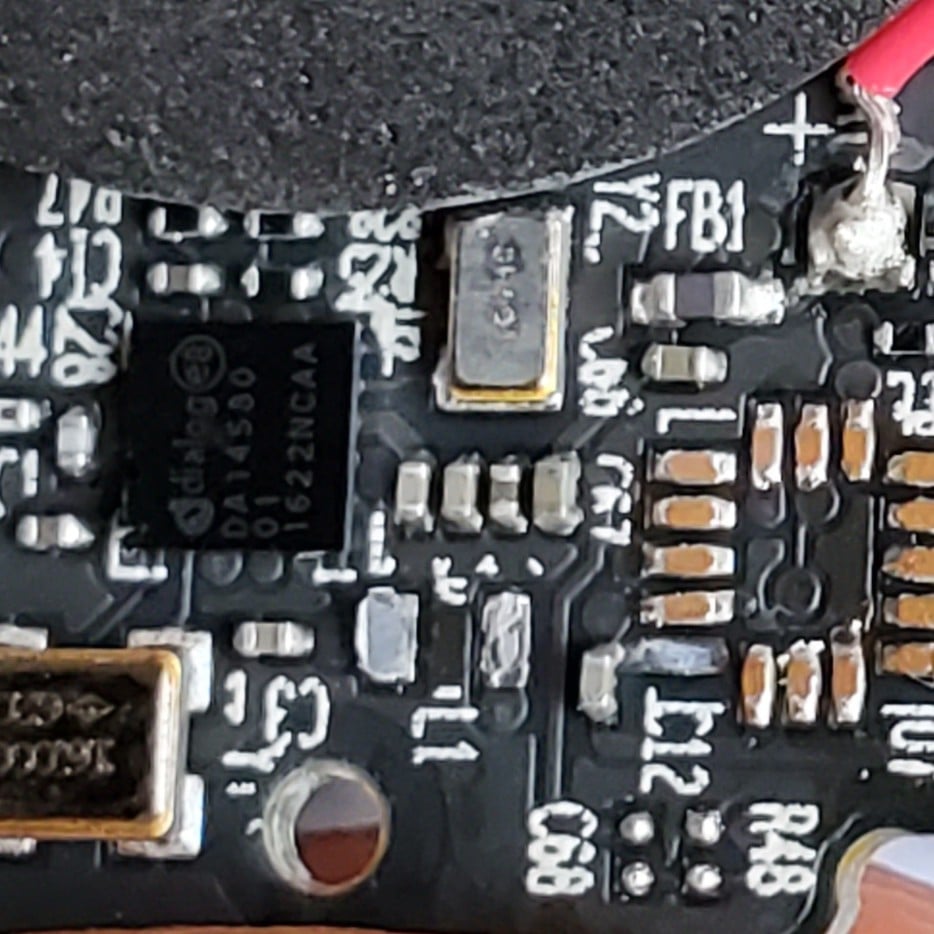The only few reason I know so far is software availability, like adobe software, and Microsoft suite. Is there more of major reasons that I missed?
I gave up on linux because it made academic collaboration difficult as a grad student. I spent too long trying to make a system to bridge the gap between mac/windows and linux, and not enough time on research. Professors don’t care that you use arch btw, they just want results, and will not be forgiving if you explain that linux is what’s slowing you down.
Why aren’t you using LaTeX to write your thesis though?
There are few online options, also you could just sync it to a common folder so it could work that way… But rarely thesis are drafted concurrently -
The main advantage of LaTeX is the easy type setting for journal articles/thesis etc and ease of changing the style.
If you’re committed to word-style documents instead of LaTeX, pandoc is a great way to convert between word and the style of your choice (for me, markdown). I made a bunch of additional scripts to assist in conversion between the two.
That said, LaTeX is often a better choice. I’ve settled into a combination of overleaf / git / vscode / LaTeX that keeps my collaborators (and myself) happy.
i use all OS so i didn’t give linux up but i don’t use it in a lot of cases that i think it should be better.
i got frustrated at snapd and the whole container by default approach most distros are going.
selinux already does what people want jails to be doing. app armor worked well enough.
Gave up because of hardware issues. Laptops had fan problems with it on, the grub wouldn’t install right, a lot of the good distros would show up as black before or after installation. My latest attempt with a decade old iMac made the screen die after less than half an hour upon each reboot. Most of these computers should work very well with Linux but they never did for me. Back then it was a matter of just because you can, doesn’t mean you should.
My latest attempt with a decade old iMac made the screen die after less than half an hour upon each reboot.
My favorite part about the internet is when someone else somehow has the exact same completely obscure issue that I’ve had
It’s gotten a bit better, but last time I tried switching, the GUI client for my VPN provider was shit, the PC gaming compatibility aspect (non-Steam) wasn’t quite good enough for me, Nvidia’s drivers said fuck you to my display, and I couldn’t quite figure out how to set up Samba. Lol.
Nvidia’s drivers said fuck you to my display
Easily one of the longest and most headache inducing troubleshooting sessions I ever had on Linux -_-
Ive quite enjoyed the KDE NordVPN plasmoid. Visually integrates it into the taskbar.
Problem with NordVPN is I believe it doesn’t have Port Forwarding. Please correct me if I’m wrong on that.
(In any case, NordVPN does sit right with me; seeing them advertised by every single YouTuber under the sun just…idk…feels yucky.)
I’d definitely recommend checking back in a year or two to see if it’s changed. Compatibility is definitely getting better over time even if it is slow.
Hardware support. My laptop speakers and fingerprint reader don’t work in Linux.
Some people like to work on their pc, and not work on their pc.
Don’t get me wrong I love Linux, but outside of the Lemmy echo chamber is isn’t very accessible for the average user
deleted by creator
Rustdesk is better than this proprietary spyware teamviewer
deleted by creator
HDR is an issue. It just doesn’t seem to work right. Media players do all kinds of weird stuff. I’ve seen six screencaps from six media players taking snapshots of the same file, and they all had their colours wrong in different ways on Linux. VLC managed to get the colours right, but then lacked some other features. The Linux version of his previous media player uses different codecs on Linux so it suffers from the same problem.
Not surprising, there’s zero HDR support on Linux desktop as of right now. You either need a player that can tonemap from HDR to SDR or you need to run your entire desktop through gamescope (which is what Steam Deck is doing).
However, KDE Plasma 6 releases next month and it’s the first desktop environment to come with rudimentary HDR support. So things are evolving in that area.
About 23 years ago I couldn’t make it boot when I plugged in a USB hub.
And since, my life just became too invested in Microsoft/Adobe products to be able to use something else as a daily driver.But I “use” Linux every day - whether it’s the PiHole, the NAS, the server that runs my 3D printer, or WSL in Windows PowerShell. I’m about to spin up my own OPNSense router, too.
Weird trajectory on WSL - I learned Unix commands using MacOS terminal for a previous job, but I generally abhor windows command line (it just doesn’t work with my brain). So now when I use commend line in windows, I default to *nix.It sort of works out that I use Macs for personal use, Windows for work, and Linux to run the systems of my life.
Because it’s not Windows and it’s not MacOS. Yes, it’s an operating system, but what people are comparing against are their expectations. I dont expect a program that’s not written or designed for my particular distribution or operating system to work. Now, in some cases it turns out that it does and sometimes it works better then under Microsoft, but that shouldn’t be your expectation. The software that is made for it runs as expected.
Working hardware is usually step one. If your hardware isn’t supported then of course you’re in for a rough ride.
Because it refuses to work well without constant tinkering.
I picked up a raspberry pi 5 to use as my desktop at home, and tried pi OS, Ubuntu, KDE Plasma, all of which could connect to my home wifi network, but none of which would provide reliable upload or download speeds. Ongoing issues with connection quality to my Bluetooth speaker. Trying to find fixes online is challenging.
I wound up installing android, and everything just works.
So… You’re aware that all the things listed are Linux at their core, right? Android runs on the Linux kernel.
Constant tinkering really means understanding how the system works; not to mention a system (be it Mac/win/lin) which needs no modification is one unused. The only way construction in NYC would stop being a ‘problem’ is if the city were dead.
Android is Google/Linux not GNU/Linux tho. You can’t even create a damn symlink.
Because to most people, a computer is like buying a car, it should just work.
A Mac is an Automatic, no configuration is needed outside of your favorite radio stations. Sure most people hate that the infotainment was replaced with a touch screen that only support carplay. But hey for the rest of the time they don’t think about it. A widows PC is the same thing, but made by Tesla/BMW where the heated seats are a subscription service.
Linux is a range from manual to a kit car. Sure it can look like the big boys or even cooler. But the amount of work that’s required is insane to the average user, and most people won’t want to touch the hood, let alone to configure the infotainment so it can connect to your iPhone since it technically supports car play. But to those that know how to use it will swear that their manual car is better in every way than an automatic.
That’s the thing about Linux though, is it really depends on the user. The average user doesn’t need any more than a web browser and maybe some Office suite. Chrome OS has shown this. Linux is actually great for these users.
It’s the semi-power user, the one that has to do a lot of work, but doesn’t know much about computers that Linux seems to trip up.
It’s like that wojack bell curve meme.
You perfectly describe Linux from 10-20 years ago but a lot has changed and improved
Last time I installed Linux, it took me about 30 minutes. I had a perfectly fine system that I then improved to my personal likings because I can, not because I must.
I also (about a month or so ago) installed windows 11 and it was a shit show. Getting the ISO installed on a USB stick already took hours and more attempts than I wish to remember to get something that actually worked.
Then the installation, It took literally hours, loads of “I want to sell you shit you don’t need!” screens, I needed to download gigabyte sized files for drivers with bloat shit, it managed to freeze within minutes.
People pay money for that shit and it will spy on you.
Meanwhile in Linux land, you can have it as simple or as complex as you wish
Don’t come up with the “but inevitably something will break and then you need a command line she’ll” because have you ever had the fun of needing to dig around in undocumented windows registry bullshit, or the windows “power” shelll?
I too am using Linux, but finding an “automatic” linux is difficult since most distros are about performance. It’s like trying to find an Italian Sports Car with an automatic.
And for the general user, they don’t install their OS. It’s preinstalled on a Laptop, or an all-in-one, think-dell office PC that their company provides them. Sign in like you do with everything today and you are good to go. Even Macs do this.
Linux has improved, but the desktop os’s need to be more stable (in 1 year I broke 2 manjaro installs and my BTFS file system died in my Fedora install), packages need to be more up to date, and there needs to be gui’s for any setting that a user needs to access like restarting a systemd process. A general user will not touch a terminal. Let alone download a git repo, just to update the latest build of Mangohud since the Ubuntu version is so out of date that the GOverlay GUI Utility that’s on Ubuntu doesn’t work with it.
manjaro’s so notorious for it’s bad mainteinance it even gained a website for tracking the last time they screwed something up. I’m glad I haven’t seen anyone recommend that shitty distro in a while. Tbh nix (the package manager) has proven to provide excellent stability no matter whether I used it on macOS or Artix. It’s been more than a year since I had to reinstall my OS or generally deal with large scale system breakage. Also have grub set up to provide both a LTS and edge kernel, for example. The last installation that broke for me was well over a year ago, it was OpenSUSE Tumbleweed and it also used btrfs. Which is a pretty nice FS if set up correctly, but by default it’s quite slow. Then I switched to Alpine since I’ve been using it on a VPS for a couple of months earlier and absolutely loved it. I don’t count fucking up the configuration files as system breaking because I assume the consensus to be that we refer to unexpected issues here. Getting rid of GDM, glibc, bash, systemd, coreutils and similar bloat not only speeds up your system, it also improves it’s security and stability.
I wonder when I’ll become so deranged to start tinkering around with BSDs and Gentoo, it’ll be pretty funny if instead of wasting my time gaming I’ll waste it hacking my system to improve it’s responsiveness by 1-2% lmao
TBH, when Manjaro broke it was my fault, I know it was my own fault, and I feel if I was running EndeavorOS the results would’ve been the same if I did the same actions.
That said, yes the miss-matches repos drove me insane, especially as someone who likes keep my update number at 0, and I can’t update AUR packages. And there were a few niggles and grips here and there. But as a power user, who didn’t want to touch a terminal, Manjaro has the best set of Setting and Configuration GUI’s I’ve used thus far in Linux. If another distro took what Manjaro did, but kept it to the Arch Repos, then I’d use it in a heart beat.
For me was when Mint suddenly broke my Bluetooth driver and I had to dig deep about how to fix that wasting my entire day on it, this was 2016 I think.
I just wanted to play some games.
My guess is also choosing the wrong distro and/or the stress of having to reconfigure your digital life.
Most people are coming from being on a PC/Mac for +10 years and so it feels inefficient for the first month or so until you get the hang of things. I legit had a checklist of +20 tweaks to make to my env to make it more to my liking. The joys and frustrations of choosing KDE as my intro DE almost drowned me but I made it to the other side.
This is a weird reason, but there is a logic to it.
I use Linux at work, and I associate Linux with writing software.
Once I’m done working for the day, I want to relax and do something fun. For me, that is Windows. While I don’t particularly care for any OS, I associate one with work and one with play.
The opposite was true when I used to work with .NET on Windows 7. I hated using Windows on my home laptop, and Fedora became my “fun time OS”.
consider running two linux distros…?
It’s not just the UI. It’s the difference in fonts, it’s even weird stuff like using Powershell over the Terminal, or the file system structure.
I get the same with OSX. I use a MBP, and that’s also “work mode” to me. It all puts me on edge, whereas with Windows I can relax.
With that being said, I’ll switch to OSX or Fedora if I’m in an interview doing code challenges, even if I’m using a browser-based code editor.
This is absolutely me as well, only the other way.
I use Macs at work.
But I game on Windows, and code on Linux.
Originally my workplace was using Fedora servers, which acted too similar to my Linux laptop, and I had to switch it to Ubuntu. That mental separation
20ish years ago I installed Ubuntu on a laptop with the intention to get off Windows. I then spent 4 to 6 hours a day for the next two weeks just trying to get the WiFi to function. None of the fixes I could Google up worked, and that was frustrating. It was the people in the Linux forums that finally made me quit trying, though. The amount of gatekeeping was kind of shocking. Like, how dare I bother such mighty computer men with my plebian questions. I should feel honored that anyone condescended to respond at all, and I should gratefully accept their link to a fix I’ve already tried and fuck off.
I bought a new PC last year and I hate Windows 11 so much that it’s got me eyeing Linux again. But the thought of having to repeat that whole ordeal again makes me feel sick to my butthole.
I bought a new PC last year and I hate Windows 11 so much that it’s got me eyeing Linux again
You can always downgrade to windows 10
I can totally relate to this. I‘m pretty far into my own linux journey and if I didnt have so much stuff already done and wouldnt know as much, I probably would have a really bad time sometimes.
It’s definitely not the majority (anymore, I guess) but there are some real elitist douchebags out there. The amount of times I got RTFMd is unholy.
By now, I do understand some of it as some users get really frustrated. This is hard to deal with sometimes as using polished windows has made them used to being pampered into helplessness. This does trigger me at times. I have to work hard to not RTFM them in that case.
TL;DR: imo, a lot of folks on both sides get frustrated because M$ and others make shiny, well oiled data collection machines and linux is neither the former nor the latter.
I’m not sure Windows is particularly polished though. Going back to it on occasion it feels kind of awful to use. I think most people are just fighting decades of muscle memory on how to use a PC
I switched pretty recently (maybe 6 months) and while the muscle memory is true, windows has a severely dumbed down and simplified everything imo. Even gnomes very limited customizability (without using cli) is a lot more than most windows users regularly need. Just from what I have seen over the years, not objective fact.
Lemmy is basically a Linux forum these days. Have you seen that kind of attitude here on Lemmy? You should give Linux another go and post any problem you have here on Lemmy.
(That attitude has completely changed. Maybe give it another try sometime)
Even today, the Arch community is exactly as previously described.
I know people meme around about it but have you actually experienced it yourself? As an Arch user myself, can’t confirm.
Yes.
My last experience was around 2 months ago with a driver issue. In the forums, someone linked a solution, and a lot of comments were in the lines of “Seriously? This was already in the newsletter, why are people not reading/subscribed to it. It’s their problem then”. Funnily enough, an actually helpful comment noted that the newsletter solution had a typo that made the solution not work as expected.
what distro was it back then? some distros religiously dedicated to software freedom don’t ship the proprietary
linux-firmwareblobs which might, among other things, contain your WiFi drivers.I honestly don’t remember. It was a long time ago. I also tried Mint thinking it might be more intuitive, but I couldn’t get WiFi to work with either of them.
virtually any built in card works these days. with 3rd party cards… well you’re better of looking up it’s chipset and how well it is supported by linux before you buy one, for example some cheap realtek dongles had no WPA3 support and worse throughput. Iirc Broadcom has for a long time been hostile towards linux.
















